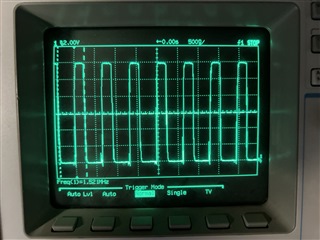Other Parts Discussed in Thread: BQ40Z50
Tool/software:
Hi there—we are evaluating whether it is worthwhile to increase VBUS from 9 V to 12 V in an effort to increase available input power at the expense of BQ25798 efficiency. The results of a complete charging cycle are as follows:

The plot is obtained by continuously polling the BQ25798 and our gas gauge (BQ40Z50) over I2C. Input current and charger temperature are read from the BQ25798, while the remaining parameters are read from the gas gauge. We can see that charger temperature has reached the thermal regulation limit (120 deg. C) pretty easily, so battery current is throttled back from the programmed charging current (5.0 A); this seems expected.
However, the logs recovered from this test indicate that charging was not terminated until battery current (as read from the gas gauge) reached 250 mA; this is much lower than the programmed termination current of the BQ25798 (480 mA). As a result, charge time was roughly 2 hours longer than expected.
When I arrived at my bench a short time later, I removed and re-inserted the USB-C charger and found that charging immediately re-started. I dumped the BQ25798 registers; the results are as follows:
0 1 2 3 4 5 6 7 8 9 a b c d e f
00: 02 01 b8 01 f4 6a 01 2c 8c 0c 03 00 dc 4b 3d a2
10: 80 00 10 01 14 aa c0 7a 55 01 2c 0f 90 01 00 00
20: 00 00 df 94 00 00 00 00 ff c7 7f 1f ff fc 80 00
30: 00 01 37 01 04 2f 13 2e f4 2e f6 11 37 11 4b 02
40: 54 00 35 00 0d 00 2a 00 19 ff ff ff ff ff ff ff
From this, we can conclude that:
- IBAT = 260 mA < ITERM = 480 mA
- VBAT = 4407 mV > VREG - VRECHG = 4200 mV
- CHG_STAT = 4 (CV mode)
All three conditions defined in section 9.3.9.3 of the datasheet with regard to charge termination are satisfied—why does charging continue?
On a hunch, I disabled a few hundred mA worth of illumination downstream of VSYS; charging immediately terminated. I then re-enabled the load, and charging did not resume. With the load still enabled, I removed and re-inserted the USB-C charger to create the original failure condition in a more controlled setting. Charging immediately resumed again, and the BQ25798 registers report a similar scenario:
0 1 2 3 4 5 6 7 8 9 a b c d e f
00: 02 01 b8 01 f4 2b 00 c8 8c 0c 03 00 dc 4b 3d a2
10: 80 00 10 01 14 aa c0 7a 55 00 c8 0f 90 01 00 00
20: 00 00 00 00 00 00 00 00 ff c7 7f 1f ff fc 80 00
30: 00 03 7e 01 79 13 21 13 09 13 13 11 39 11 50 02
40: 54 00 2e 00 00 00 00 00 19 ff ff ff ff ff ff ff
Like before, we see:
- IBUS = 894 mA
- IBAT = 377 mA < ITERM = 480 mA
- VBAT = 4409 mV > VREG - VRECHG = 4200 mV
- CHG_STAT = 4 (CV mode)
After the load is disabled, the BQ25798 registers are found to be as follows:
0 1 2 3 4 5 6 7 8 9 a b c d e f
00: 02 01 b8 01 f4 2b 00 c8 8c 0c 03 00 dc 4b 3d a2
10: 80 00 10 01 14 aa c0 7a 55 00 c8 0f f0 01 00 00
20: 00 00 00 80 00 00 00 00 ff c7 7f 1f ff fc 80 00
30: 00 00 e4 00 00 13 a7 13 98 13 96 11 25 12 15 02
40: 54 00 35 00 00 00 00 00 19 ff ff ff ff ff ff ff
Now, we see:
- IBUS = 228 mA
- IBAT = 0
- VBAT = 4389
- CHG_STAT = 7 (done)
The results seem to suggest that current drawn from VSYS may impact the current used to judge termination, as opposed to IBAT alone—are these results expected? If so, is there any way to work around this behavior? Thank you in advance for your support—in case I can provide any additional information, please let me know.



